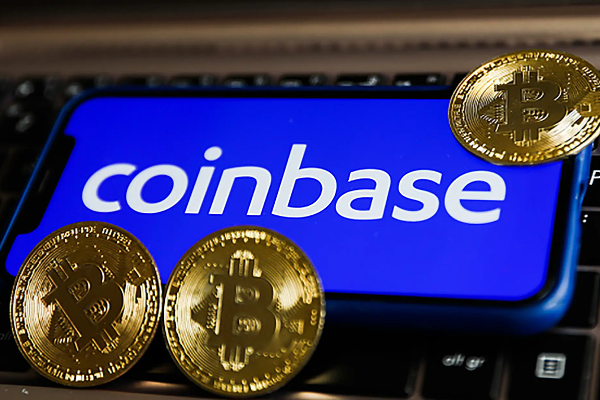Mining machine prices increased by 24%, Trump's tariff policy is impacting the US Bitcoin mining industry

Trump’s tariff policy will have a significant impact on the Bitcoin mining industry. Here is an analysis of the impact of this policy on the industry.
On April 2, Trump announced comprehensive new tariffs on imported goods, aimed at strengthening the US trade balance. Southeast Asia was hit hardest, which has far-reaching effects on the Bitcoin mining supply chain. The region is home to most mining machine manufacturers, including major producers such as Bitmain, MicroBT, and Canaan.
In addition, since the United States accounts for 36% of global computing power, these tariffs may have a significant impact on the economic benefits of miners, the price of hardware in the United States and abroad, and the global computing power distribution.
Before we delve into the multifaceted impact of these tariffs on the Bitcoin mining industry, let’s briefly explain how tariffs work.
How do tariffs work?
Tariffs are taxes and fees imposed by governments on imported goods, usually with the purpose of protecting domestic industries, and they achieve this goal by increasing the price of foreign products. When tariffs are implemented, importers must pay a certain percentage of the declared value of the goods to customs when the goods enter the country.
For example, if a US company imports $1,000 worth of electronics from China and the tariff rate is 54%, the importer must pay an additional $540 in tariffs, bringing the total import cost to $1,540. This increased cost is typically passed on to consumers or reduces the profit margins of the importer.
Tariff History: US-China Trade War and Its Ripple Effects
Bitcoin mining is a global industry in which the United States is a major player, and the trade war and the tariffs it has triggered have had an impact on the industry. However, historically, companies in the industry have found ways to circumvent these tariffs. In the following sections, we will explore how tariffs have historically affected the Bitcoin mining supply chain and what strategies companies have adopted to circumvent these tariffs.
In 2018, the US government imposed a 25% tariff on a range of Chinese goods, including electronics, as part of the US-China trade war.
In response, companies such as Bitmain began looking for ways to circumvent these high tariffs. They moved production from mainland China to Southeast Asian countries such as Indonesia, Thailand, and Malaysia, which either exempted goods from duty or paid lower tariffs on goods exported to the United States—usually between 1% and 3% for electronics.
This strategy worked well until earlier this month, when Trump increased tariffs on goods imported from Indonesia, Malaysia, and Thailand to 32%, 24%, and 36%, respectively. As a result, companies such as Bitmain and MicroBT can no longer completely avoid these high tariffs, which were initially only applied to goods imported from China.
In the following sections, we will explain in detail how these newly implemented tariffs will affect the Bitcoin mining industry.
Mining machine prices in the United States will increase significantly
The most direct and obvious impact of the tariffs is that mining machine prices in the United States will increase significantly.
As Ethan Vera pointed out on The Mining Pod: "…any company operating in the United States that wants to purchase mining machines will need to pay an additional 22% to 36% for these mining machines." This is consistent with our data.
However, the 22% price increase only applies to imported mining machines. Currently, there is still a large inventory of mining machines in the United States. According to Bitmars pricing data, there is currently a 13% to 25% price difference between mining machines in the United States and mining machines in Hong Kong. As US inventory decreases, this price difference may narrow to 22%, plus a small shipping fee.
The above chart shows the final cost of importing a $1,000 Bitcoin mining machine into the United States and Finland before and after the introduction of reciprocal tariffs. Finland, like most other countries, has no tariffs on electronic products imported from Asia - we use this country as an example because we mine there.
As shown in the figure, the cost of importing mining machines into the United States is slightly higher initially due to the tariff of about 2%. However, after the new tariffs were introduced, the minimum cost of a mining machine originally priced at $1,000 in the United States rose to $1,240. This is a significant increase. Meanwhile, in Finland and most other countries, the cost of a $1,000 mining machine remained the same due to the lack of tariffs.
In an industry as cost-sensitive as Bitcoin mining, a 22% increase in mining machine prices could make operations financially unsustainable. Later in this article, we’ll explore how these changes affect mining profitability in the U.S. and elsewhere.
Mining Machines Could Get Cheaper Outside the U.S.
As mining machine prices rise in the U.S., prices in other parts of the world could see an opposite downward trend.
Demand for mining machines shipped to the U.S. is expected to drop significantly, perhaps even close to zero. Given that the U.S. has long dominated the ASIC (application-specific integrated circuit) market, accounting for nearly 40% of global computing power, a sharp drop in U.S. purchases would result in a significant reduction in global demand.
With less demand from U.S. miners, manufacturers will be left with excess inventory that was originally intended for the U.S. market. To clear that inventory, they may need to lower prices to attract buyers from other regions.
While it’s difficult to predict exactly how much mining machine prices will drop — since mining profitability also affects prices — we can conclude from basic economic principles that less demand for an asset generally leads to a drop in its price.
This price drop will make it easier for miners outside the United States to continue to expand, which may also lead to the decline in the United States' share of global computing power that we will discuss next.
The United States' share of the global Bitcoin mining industry will decline
Since China banned Bitcoin mining in 2021, the United States has been the dominant force in Bitcoin mining. According to data from Hashrate Index, the United States currently accounts for 36% of the global computing power.
Like any business activity, Bitcoin mining is all about balancing risk and reward. Over the past four years, the United States has attracted a large amount of mining investment because it is seen as one of the lowest-risk environments in the world, with political stability, abundant energy, and a liberalized electricity market. In addition, miners have so far avoided major import tariffs, which has helped them control capital expenditures. Together, these factors create an unparalleled risk-reward balance.
To understand how the new tariffs reshape the United States' share of global mining, we first analyze it from a return perspective.
The figure below shows the estimated payback period for deploying an Antminer S21+ in the United States and a country not affected by the tariffs. As the data shows, paying 24% more for the same mining machine in the US will significantly extend the payback period - which weakens the core economic rationale for mining in the US.
In addition to higher mining machine costs, the risk side has also been hit. Many US miners felt reassured when Trump returned to power, expecting a stable regulatory environment. But they are now experiencing the other side of his policy changes. Even if these tariffs are reversed in a few months, the damage has been done - confidence in long-term planning has been shaken. Few will be willing to make major investments when key variables may change overnight.
In short, the once unparalleled risk-reward balance of US Bitcoin mining has deteriorated significantly. This change may cause the US share of the global mining industry to gradually decline relative to other countries.
Of course, existing mining machines that have been imported into the US will not be affected - miners have no reason to shut them down. But the path to expansion is now steep and uncertain.
Meanwhile, miners in tax-free jurisdictions will continue to expand and consolidate their competitive advantage. Therefore, the US share of global computing power is expected to decline - not because miners quit, but because they are no longer growing.
From a broader perspective, this could lead to a more diverse geographic distribution of Bitcoin mining than ever before. While the United States will remain a major player, its dominance will diminish, and global hashrate will be more evenly distributed. This is consistent with predictions from Braiins’ Kristian Csepcar and Bitmars’ Summer Meng.
Network Hashrate Growth Will Slow
In the previous section, we explained how the new tariffs will lead to a decline in the U.S. share of the global Bitcoin mining industry. Given the U.S.’s large role in global hashrate, a slowdown in its growth—or even a complete halt—will inevitably lead to an overall deceleration in global hashrate growth.
According to Hashrate Index, the U.S. accounts for about 36% of global hashrate by the second quarter of 2025. In contrast, CBECI data shows that the U.S.’s hashrate share was about 38% in January 2022. This suggests that over the past three years, the U.S. mining industry has grown at roughly the same pace as the rest of the world.
Assuming this growth trajectory would have continued, the U.S. would have contributed about 36% of future global hashrate growth. Therefore, if the U.S. mining industry stagnates due to the impact of tariffs, it could lead to a reduction in global hashrate growth of up to 36%.
However, it is highly unlikely that the U.S. mining industry will stop growing completely. As we will explain in the next section, these tariffs are likely to be temporary and there may be ways to circumvent them in the future. Therefore, a more realistic expectation is that the U.S. mining industry will continue to expand, but at a much slower rate than before. The assumption of a 36% reduction in global hashrate growth should be considered an absolute upper limit - the actual impact may be slightly lower.
In the long term, if U.S. growth slows or stagnates, miners in other countries may accelerate their expansion and gradually fill the gap.
Nonetheless, in the short to medium term - within the next year or two - we may see slower global hashrate growth than previously expected. In an industry where slower hashrate growth means higher revenues, this would be a welcome development for miners around the world.
Is this temporary or permanent?
So far, this article has taken a rather pessimistic view of how these tariffs will affect the U.S. Bitcoin mining industry - and this is reasonable, given the immediate and severe impact they are likely to have. However, the picture is more complicated and there are some important questions worth exploring.
In the following sections, we will answer these questions and assess how the long-term outlook for the U.S. mining industry stacks up against the current challenges.
Will Trump remove the tariffs a few months after they are implemented?
It’s entirely possible—especially given the unpredictability and reactive nature of Trump’s policymaking style. If the tariffs are rescinded, U.S. miners will once again be able to import mining machines at competitive prices, relieving many of the immediate pressures they face.
However, the damage to long-term investor confidence may have already been done. Even if the tariffs are removed, the fact that they were introduced so suddenly makes it more difficult to make large, long-term investments in the U.S. mining industry. In an industry as capital-intensive as Bitcoin mining, policy stability is essential—and right now, that’s exactly what’s scarce.
Can mining machine manufacturers circumvent tariffs by importing chips from Taiwan and assembling mining machines in the U.S.?
It’s indeed possible for mining machine manufacturers to circumvent tariffs by importing chips from Taiwan and assembling mining machines locally in the U.S. According to official statements from the White House, semiconductors are not subject to reciprocal tariffs. This means that chips can be imported into the U.S. duty-free. However, local production of mining machines in the U.S. still requires other components, many of which have become more expensive due to tariffs, which will lead to overall inflation in the U.S. economy.
Currently, manufacturers like MicroBT have established assembly lines in the United States, but Bitmain has not followed suit. Even with MicroBT's assembly capabilities, its production capacity is far from sufficient to meet the US demand for mining machines in the next 1-2 years.
Therefore, while this option is technically feasible, it does not solve the immediate problem of US miners. However, in the long run, we expect more mining machine assembly to gradually shift to the United States as manufacturers adapt to the new tariff environment and expand local production capacity. This shift may help reduce dependence on international imports and reduce the impact of tariffs over time.
Is it realistic to establish a complete Bitcoin mining hardware supply chain from chip manufacturing to final assembly in the United States?
Establishing a complete Bitcoin mining hardware supply chain from chip manufacturing to final assembly in the United States is a complex challenge, despite strong pushes from both the Bitcoin mining industry and political leaders to localize chip production. Currently, the most advanced chips used in Bitcoin mining are produced in Taiwan, China and South Korea, regions with decades of expertise and finely tuned supply chains. The United States' dependence on Asian countries for key components is a significant geopolitical risk not only for the Bitcoin mining industry, but for the entire high-tech industry.
While localizing mining machine assembly in the U.S. is feasible, continued reliance on imported chips is a major obstacle. Companies like Bitmain, MicroBT, and Canaan can set up assembly lines in the U.S., and new players like Auradine are also eyeing this market. However, without locally produced cutting-edge chips, these manufacturers will remain dependent on imports for the foreseeable future.
Kristian Csepcsar of Braiins further highlighted this challenge, saying, “Chip foundries have already established manufacturing facilities in the U.S., but they started at the high-nanometer level. It takes years to develop the talent and expertise to move to lower nanometer levels. The process is gradual — companies start with high-nanometer chips to ensure that the investment is profitable, and then work to expand to more advanced technologies. Even if the U.S. moves forward, it will be almost impossible to establish a fully localized Bitcoin mining hardware supply chain, and the costs will be very high. The real question is whether it is still cheaper to manufacture in China and pay the tariffs if demand is high. After all, it takes time and a lot of investment to launch end-to-end manufacturing in the U.S., as Bitmain recently tried to establish an assembly line in China — although there has been little news since.”
In short, despite the great potential of the U.S. in assembly and chip manufacturing, a fully localized Bitcoin mining hardware supply chain remains a long-term goal rather than a short-term reality. The cost, time, and complexity of this transition make it unlikely to be achieved at scale in the next few years.
Conclusion:
In summary, the newly implemented tariffs on imported goods will significantly affect the U.S. Bitcoin mining industry — leading to higher hardware prices, a decline in U.S. market share, and slower global computing power growth — but the long-term impact is more complicated.
Miners and industry stakeholders need to keep a close eye on the political and economic landscape as the situation develops to prepare for potential tariffs and policy changes. The U.S. mining industry may face challenges in the short term, but there are opportunities for growth and adaptation in the global mining ecosystem.









